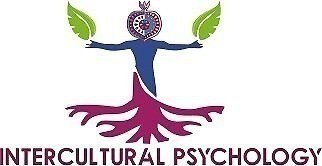Finding Peace in the Present Moment: A Mindful Path to Healing
Finding Peace in the Present Moment: A Mindful Path to Healing
By Dr. Nadia Thalji | Intercultural Psychology
“I have arrived. I am home.”
— Thich Nhat Hanh
In an era defined by deadlines, distractions, and digital noise, the simple act of being present can feel almost revolutionary. Yet, mindfulness is not a luxury—it is a necessity. For those of us carrying the weight of cultural dislocation, trauma, or inherited restlessness, mindfulness offers not only a practice, but a path home.
The Vietnamese Zen master Thich Nhat Hanh teaches that our true home is the present moment. This idea may sound poetic, even simplistic. But for many of us, especially those navigating multiple worlds—professionally, culturally, spiritually—coming home to ourselves is the work of a lifetime.
Why We Run
Many of us are not at ease in the here and now. We're taught—by families, systems, and histories—that rest must be earned, and that happiness lies somewhere in the future. We keep going, chasing completion, safety, or worthiness. This is what Thich Nhat Hanh calls habit energy: a deep, often unconscious tendency to run—even when there is nowhere to go.
We run toward productivity. Toward healing. Toward approval. We run even in our minds, scrolling past the moment in front of us.
But when we are always running, we miss our lives.
A Radical Return to Now
Thich Nhat Hanh’s mindfulness practice is grounded in everyday actions—especially walking. He teaches a simple but profound exercise:
Breathe in and say, “I have arrived.”
Breathe out and say, “I am home.”
To say these words is to make a conscious shift: from striving to being, from disconnection to embodiment. It is not about pretending everything is okay, but about anchoring ourselves in the one place where healing becomes possible—the present.
As a trauma-informed psychologist, I’ve seen how difficult this can be. For many, the present moment feels unsafe. The body may carry memories of pain. But through gentle, consistent practice, we can begin to create an inner refuge. One breath. One step. One return at a time.
Intercultural Reflections on “Home”
The concept of “home” is layered and complex—especially for immigrants, third-culture individuals, or anyone who has felt rootless. Home might not be a fixed place, but a feeling of safety, belonging, or presence. This is why mindfulness can be such a powerful tool for intercultural healing. It allows us to cultivate a sense of home within, even when we are far from the lands, languages, or people we once knew.
This is not just individual healing—it’s ancestral. Many of us carry generations of movement, exile, or striving in our nervous systems. Mindfulness is a way to interrupt that momentum, and to choose stillness. To say, I am enough. I am here. I am home.
Bringing the Practice into Your Life
You don’t need hours of free time or a silent retreat. You can begin now:
As you walk to your car or the kitchen, slow your steps.
Inhale and think, “I have arrived.”
Exhale and think, “I am home.”
Let your breath and movement align.
Repeat until you feel your body soften, even a little.
You may not feel “at home” right away. That’s okay. This is a practice, not a performance. You are building the capacity to be with yourself. And with time, this practice becomes a gentle revolution—a way of living more fully, more truthfully, and more peacefully.
Final Thoughts
Healing is not about becoming someone else. It’s about remembering who you are, and returning to the place within you that was never lost—just forgotten in the rush of life.
So today, I invite you to pause. To breathe. To walk mindfully.
To remember: you have already arrived.
🌿If you’d like to experience this teaching directly from Thich Nhat Hanh, you can watch the video that inspired this reflection here:
👉 Watch Thich Nhat Hanh: “I Have Arrived, I Am Home” (YouTube)


